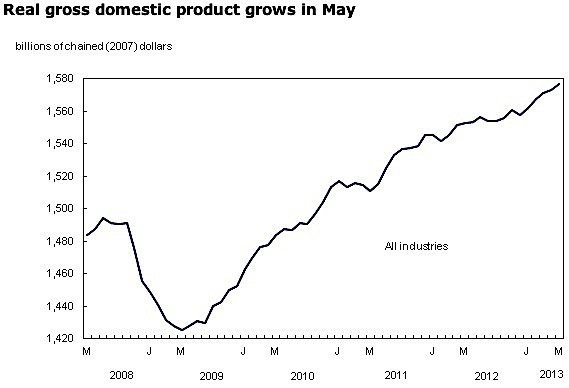The city of St. John’s, Newfoundland and Labrador will lead the country in economic growth in 2013 thanks to an increase in offshore oil exploration, the Conference Board of Canada says. GDP growth in the city is forecast to be 5 per cent this year, outpacing the fourteen other cities included in the Metropolitan Outlook: Summer 2013.
Mario Lefebvre, Director of the Conference Board’s Centre for Municipal Studies, said, “As the hub for the provincial offshore petroleum industry, St. John’s economy will get a lift from higher offshore oil and gas production. Growth in the construction sector will continue to be positive this year, though more modest than in recent years.”

Among the oil companies at work in the area is Husky Energy, which plans an extension to its White Rose field 350 kilometres offshore of St. John’s. The White Rose field is thought to contain 440 million barrels of recoverable oil, as well as gas. The extension, known as South White Rose, has a target of 20 million barrels.
Statoil of Norway recently announced a new discovery 500 kilometres northeast of St. John’s. The Harpoon discovery, which is 65 per cent owned by Statoil and 35 per cent by Husky, is at a depth of 1.1 kilometres. Its extent is unknown. It is very close to the Mizzen discovery, estimated at 100–200 million barrels.
Enegi Oil also continues its exploring in Newfoundland. The company has partnered with Black Spruce Explorations, which will drill four “commitment wells” this fall. This is expected to lead to a multi-well drilling campaign.
Chevron is one of the larger oil companies exploring in the area at the Margaree exploration well, at a depth of 2.47 kilometres. Chevron holds interests in the Hibernia oil fields, as well as the Hebron Field, with an estimated 600 million barrels.
Other cities covered in the Conference Board report will also see growth, but at the more modest rate of 1–2 per cent. Construction activity in several southern Ontario cities will partially offset manufacturing losses there, while in other cities, including Thunder Bay, Abbotsford and Moncton manufacturing will contribute to the growth. Windsor, Ontario can expect growth of 1.5 per cent in 2013 the report says, better than London’s, which will reach just 1.2 per cent.
The construction industry across Canada saw a decline of 10.3 per cent in the value of permits issued in June, Statistics Canada reports. Residential construction in Ontario was down, as was non-residential construction in Quebec. The decline in Ontario was mainly attributable to a slowing of multi-family residential construction, i.e. condominiums. Despite the dip, the first in six months, Statistics Canada says that the total value of building permits continues to trend upwards.

































